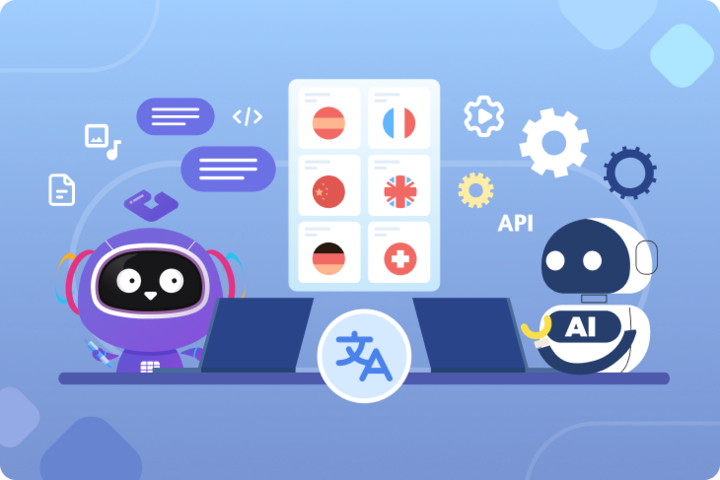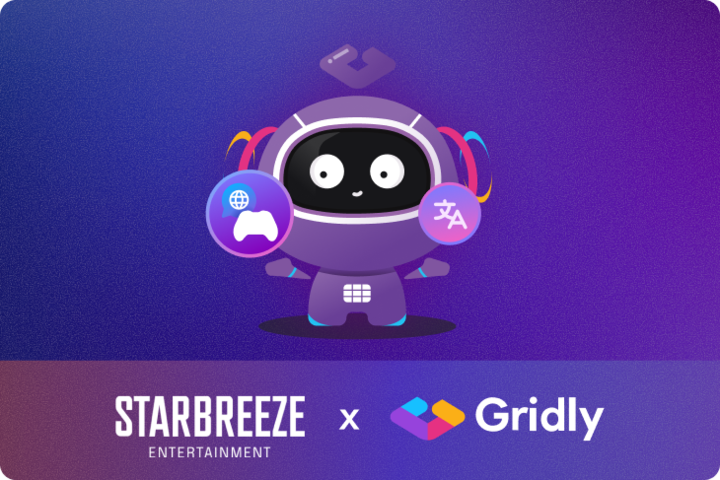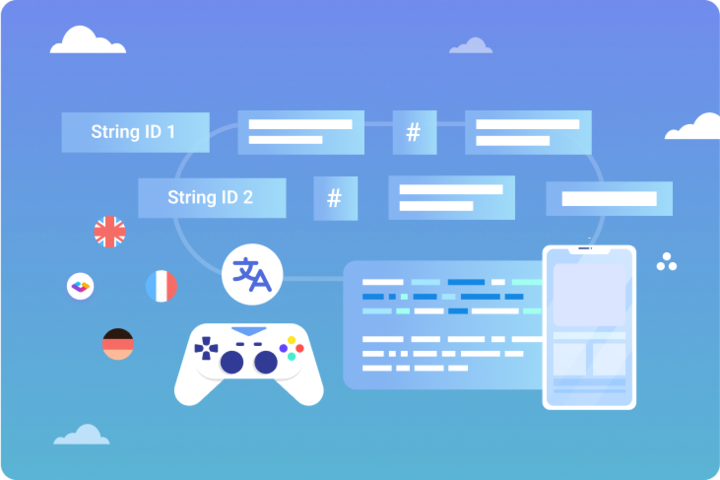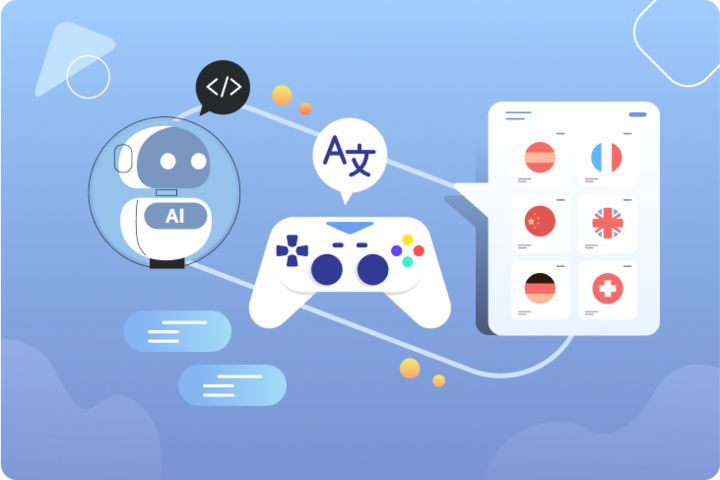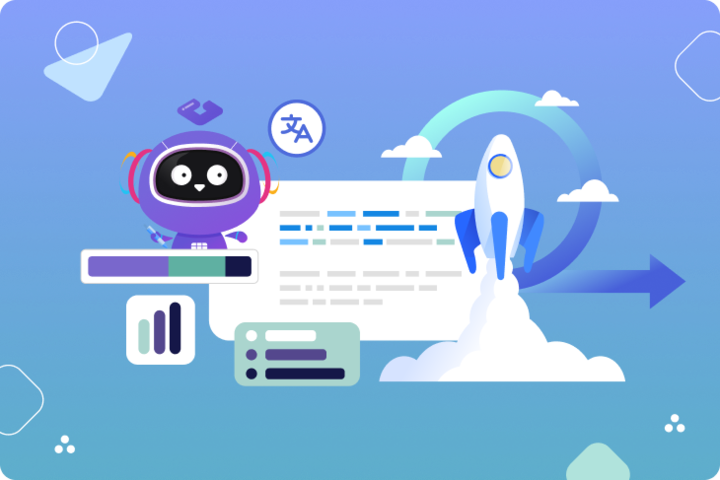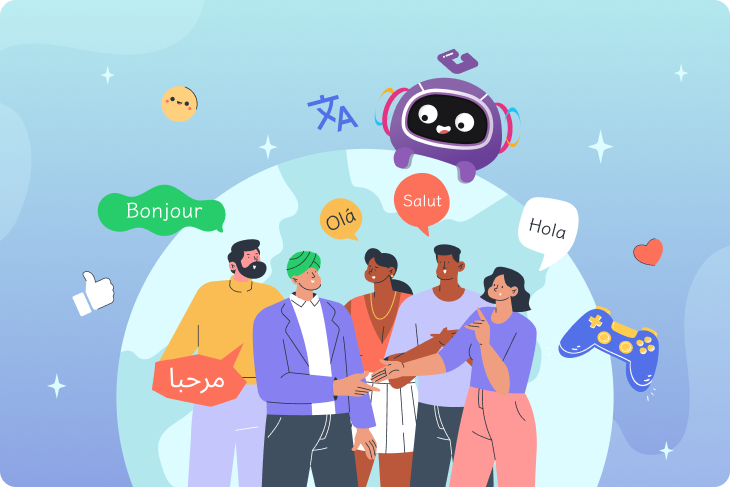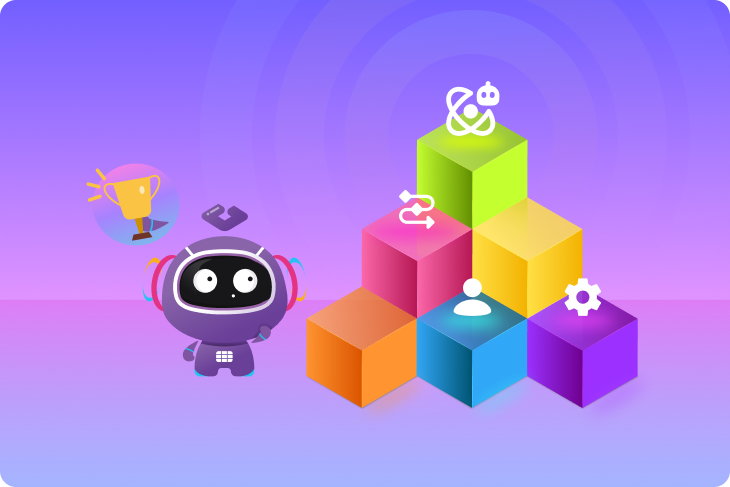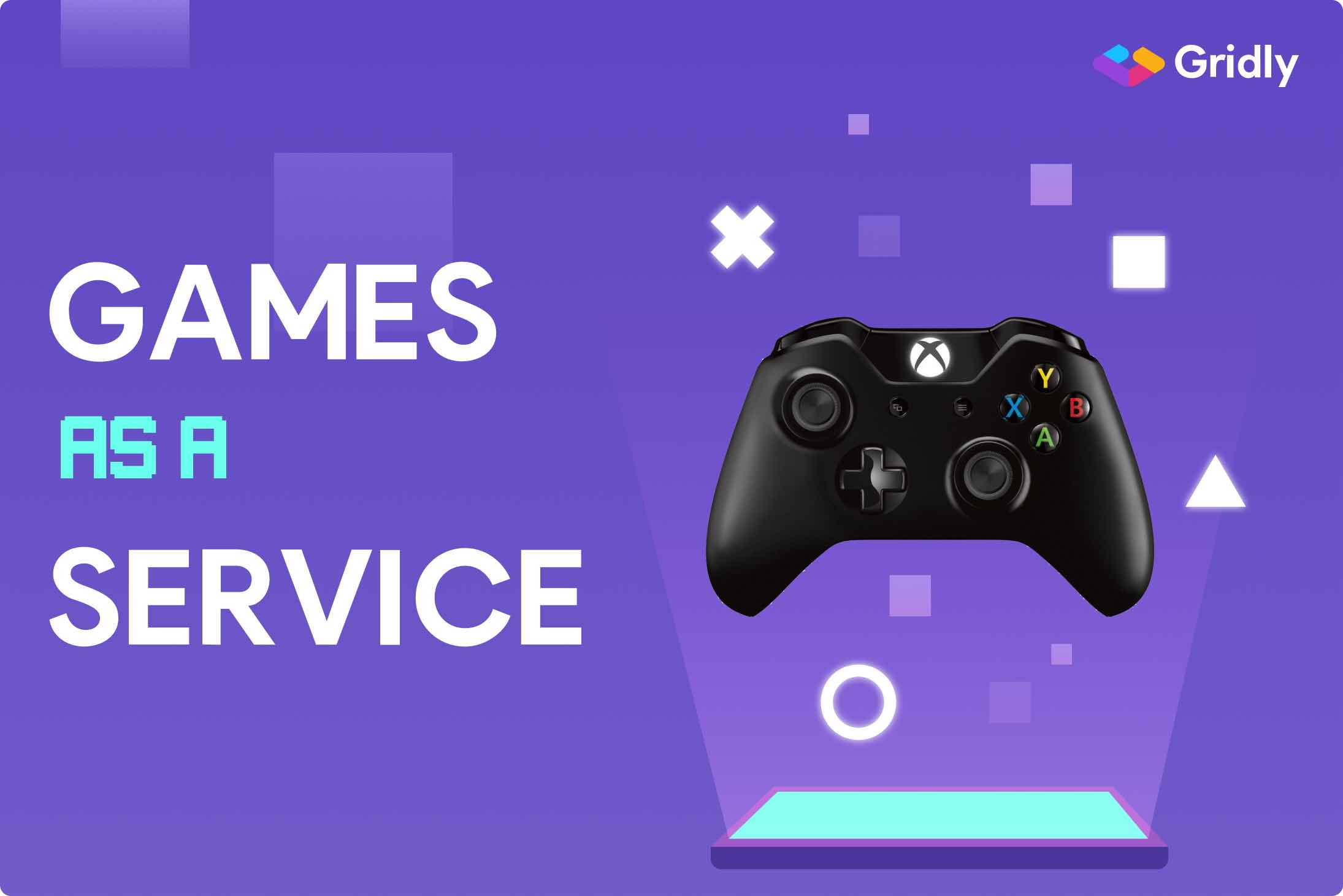What’s covered
- Where does the localization industry stand on AI?
- What can AI localization actually do (and what can’t it do)?
- What is the localization triathlon framework?
- How are localization roles transforming in the AI era?
- What are the five essential skill pivots for AI-era localization?
- How does Gridly enable the localization triathlon?
- Your transformation starts now
- Listen to the full interviews
- Frequently asked questions
The question keeping every localization professional awake at night: Will AI replace my job?
AI localization is advancing rapidly. AI translation tools are getting better exponentially every month. Automation is eliminating manual tasks. Companies are testing technologies that promise to do in hours what used to take weeks. For translators, project managers, and QA specialists, the ground is shifting beneath their feet.
But here’s the paradox that most people miss: AI is actually creating more localization work, not less. And the companies seeing the biggest success aren’t replacing their localization professionals - they’re promoting them.
The secret? Understanding that modern localization isn’t about choosing between AI and humans. It’s about mastering what industry leaders are calling the “localization triathlon.”
This guide will show you how to transform from a localization executor into an AI-powered orchestrator, why this shift is critical for your career, and how to position yourself as the professional every organization desperately needs but can’t find.
Where does the localization industry stand on AI?
The numbers tell a story of an industry in transition - caught between unprecedented opportunity and significant disruption.
The adoption reality: moving fast but unevenly
Anna Albinson, CEO of Gridly, recently shared this framework in interviews on the Localization Today podcast and Nimdzi Live. Coming from a background in SaaS scaling and business development, she brings an outside-in perspective that reveals patterns many insiders miss.
Anna Albinson shares data from Gridly’s customer base: “We have around 60% of our customers that are using some kind of AI functionality in the product. But that also means that 40% are not.”
This 60/40 split mirrors broader trends. According to the Stanford AI Index 2025, global enterprise AI adoption reached 78% in 2024. Yet despite this momentum, G2 stated that 69% of C-suite companies began investing in generative AI over a year ago, and only 47% say they are making progress in building Gen AI tools.
Most organizations aren’t asking “How do we optimize our AI workflows?” They’re still asking “How do we even start?” As Anna observes: “A lot of companies are still in some experiment phase when it comes to how to handle these workflows, how to use AI in their localization process, and how to get the best out of it.”
The five-year horizon: from versus to with
Anna predicts a fundamental shift: “In the next five years, I hope it won’t be about humans versus AI anymore. It will be about humans with AI.”
The professionals who master this orchestration now - while adoption is at 60% and climbing - will be the ones defining future standard practices. But this transition reveals a critical divide in the industry.
The opportunity gap
Enthusiasm for AI varies dramatically by role. At the C-suite level, AI adoption is practically a mandate. Leadership sees it as strategic and necessary. But move down to translators and linguists, and you find significant resistance. According to Taylor & Francis Online, only 13% of freelance translators see AI and machine translation as positive in 2025, while 60% see them as negative. Research from The Next Web shows that over three-quarters of translators (77%) believe GenAI will negatively impact their future income.
This divide creates massive opportunities. Organizations desperately need professionals who can bridge AI capabilities with human cultural nuance - who can speak both the language of C-suite strategy and localization execution. The supply of these orchestrators is incredibly low while demand is soaring.
The window is open. But first, you need to understand exactly what AI can - and crucially, can’t - do.
What can AI localization actually do (and what can’t it do)?
Before we talk about staying relevant, let’s get brutally honest about what AI can and cannot do. The hype is real, but so are the limitations.
What AI excels at
AI has genuinely impressive capabilities when it comes to:
- High-volume, repetitive translations: AI can process thousands of strings in minutes
- Consistency across large projects: Once you set the parameters, AI maintains consistency better than humans switching between tasks
- Speed for first-draft content: What took days now takes hours
- Pattern recognition in translation memories: AI identifies and applies patterns across content
- Basic terminology management: Maintaining glossaries and applying them consistently
The right AI translation software can handle these tasks with impressive efficiency, making it tempting to think AI can do everything.
But that’s where reality diverges from the hype.
The context problem: why AI still makes critical mistakes
Here’s what most vendors won’t tell you: AI translation quality is still heavily dependent on the context you provide, and most companies are struggling with this.
Anna shares her observations: “Anyone working with AI translation in localization understands this challenge. The process is complex and still evolving. AI makes frequent mistakes, and the quality often isn’t high enough for what businesses need.”
The technology is more mature than it was a year ago, but it’s still not where the marketing promises suggest. AI makes mistakes - sometimes embarrassing ones - because:
Cultural context gets lost in translation:
- AI translates “break a leg” literally in theater contexts, missing the cultural meaning
- Market-specific references that require cultural knowledge fall flat
- Idioms, humor, and wordplay often fail completely
Strategic decisions still require human judgment:
- When should you localize vs. transcreate vs. create entirely new content?
- How do you balance brand voice consistency with local cultural preferences?
- Where should you allocate resources across markets and content priorities?
Crisis management needs human intelligence:
- When AI translations go viral for the wrong reasons, you need human damage control
- Client relationships during AI failures require empathy and problem-solving
- Real-time decision-making under pressure isn’t AI’s strength
Quality goes beyond metrics:
- Sometimes 95% accuracy isn’t good enough - context matters
- “Technically correct” often misses the mark for user experience
- Balancing efficiency with brand integrity requires nuanced judgment
What is the localization triathlon framework?
So if AI can’t do everything but is essential for scale, and humans remain critical but can’t do everything manually - what’s the answer? It’s not choosing between AI and humans. It’s orchestrating all three elements of modern localization.
Just like triathletes must master swimming, cycling, and running as one cohesive race - not three separate events - modern localization requires balancing three disciplines:
- AI for speed and scale: High-volume, repetitive content processed quickly with consistency across large projects.
- Automation for efficiency and flow: Content moves smoothly through workflows without manual bottlenecks or coordination overhead.
- Humans for creativity and cultural nuance: Strategic judgment, cultural adaptation, and quality that turns technically correct content into authentic experiences.
As Anna emphasizes: “You need to make sure that you build connected workflows… it cannot be like silos. You need to design workflows that connect AI, automations and humans.”
When these three work in separate systems, context gets lost, quality suffers, and efficiency gains disappear. When they work together in one connected workflow, content flows seamlessly from AI generation to automated checks to human review - with context preserved throughout.
The professionals who can orchestrate all three are becoming the most valuable talent in the industry.
How are localization roles transforming in the AI era?
This is where it gets interesting - and where your career opportunity lies.
The role of localization professionals isn’t disappearing. It’s transforming into something more strategic, more technical, and more valuable. But this transformation requires a fundamental shift in mindset.
From executor to orchestrator: the critical shift
The most important evolution happening right now is the emergence of what Anna Albinson calls the “AI-friendly linguistic orchestrator.”
“The most important role for humans going forward is the AI-friendly linguistic orchestrator - the person running the whole operation,” Anna explains. “We need professionals who understand language and localization processes, but can also embrace technology. Someone who knows how to use AI at its best and bring out the strengths of both technology and human expertise.”
This isn’t just a fancy title. It’s a completely different role:
| Traditional localization role | AI-era orchestrator role |
|---|---|
| Manually translating content | Designing translation strategies that leverage AI |
| Managing timelines and deliverables | Building connected workflows for AI, automation, and humans |
| Catching errors after they happen | Building systems that prevent errors |
| Managing freelancers | Orchestrating technology stack and human talent |
| Minimizing costs | Maximizing business impact and ROI |
Here’s the critical insight: There’s currently high demand but very low supply for professionals who can master this orchestration role.
Anna puts it bluntly: “There’s significant resistance to AI in the industry, especially among translators. But for those who can adapt and embrace this transformation, the opportunity is enormous - demand is high but supply is incredibly low.”
Organizations desperately need people who:
- Understand both language and technology
- Can design and manage AI prompts effectively
- Know when to rely on automation and when to involve humans
- Can shift from being “doers” to being strategic “orchestrators”
The professionals who can transform into this profile are becoming the “superstars” of the industry. They’re getting promoted, expanding their influence, and leading transformation rather than being victims of it.
What does an orchestrator actually do?
Being the “prompt master”:
- Creating AI prompts that deliver brand-consistent results
- Iterating on prompts based on output quality
- Understanding how to provide context that AI needs
Setting up quality gates:
- Designing systems that catch AI errors early
- Establishing confidence scoring that automatically flags uncertain content for human review
- Creating escalation protocols for different content types
Training the team:
- Teaching team members when to trust vs. verify AI output
- Developing SOPs for human-AI handoffs
- Managing the change management process as workflows evolve
Developing connected workflows:
- Combining AI, automation, and human expertise in one integrated system - not separate silos
- Ensuring seamless handoffs between automated and manual processes
- Building one single source of truth where all three elements work together
As Anna emphasizes: “You need to make sure that you build connected workflows. It cannot be like silos. You need to design workflows that connect AI, automations and humans.”
What are the five essential skill pivots for AI-era localization?
Understanding the role is one thing. Actually making the shift is another.
The good news? These orchestrator capabilities are built on skills you already have. Here’s exactly what that transformation looks like:
1. Translator → Translation strategist
Old approach: You translated content word-by-word, focusing on linguistic accuracy and maintaining consistency through repetition.
New approach: You design translation strategies that leverage AI for volume while maintaining human oversight for creativity and cultural fit.
Skills to develop:
- Prompt engineering for AI translation tools
- AI tool evaluation and selection
- Workflow design that balances speed and quality
- Context management to improve AI output
- Understanding when AI is sufficient vs. when human translation is required
Why this matters: Humans are still essential for proofreading, creativity, and cultural nuance - but the work is evolving from doing the translation to designing the translation system.
2. Localization manager → AI workflow architect
Old approach: You managed timelines, tracked deliverables, chased vendors, and kept projects on schedule through manual coordination.
New approach: You build connected workflows where AI, automation, and humans work together seamlessly in one integrated system.
Skills to develop:
- Process automation and rule design
- Tool integration and API management
- Performance analytics across AI and human contributors
- System design thinking
Critical point: These cannot be siloed processes. Your goal is to create one unified workflow where content flows smoothly from AI generation to automated checks to human review without friction.
3. QA checker → Quality systems designer
Old approach: You caught errors after they happened, reviewing content line by line and fixing mistakes manually.
New approach: You build systems that prevent errors from happening and know when to automatically escalate to humans.
Skills to develop:
- Quality metrics design for AI+human workflows
- Automated testing setup
- Escalation protocol design
- Understanding AI confidence scoring and when it’s reliable
- Creating custom quality gates based on content type and risk level
Reality check: AI quality is still not high enough in many cases - human oversight remains essential. Your job is to design systems that make that oversight as efficient as possible.
4. Vendor manager → Technology integration specialist
Old approach: You managed relationships with freelance translators, agencies, and linguistic service providers.
New approach: You orchestrate the balance between AI services, automation tools, and human talent across your entire technology stack.
Skills to develop:
- Tool evaluation and vendor selection for (https://www.google.com/url?q=https://www.gridly.com/blog/best-ai-translation-software-explore-these-9-solutions/&sa=D&source=editors&ust=1763566289803272&usg=AOvVaw1Bzu6JX1JAhswaM9Lfe0nZ)AI translation software
- Cost-benefit analysis across different solutions
- Change management for technology adoption
- Technology stack optimization
- Integration planning and execution
5. Localization operations manager → Revenue driver
Old approach: Your job was to minimize localization costs and prove you weren’t wasting money.
New approach: You maximize localization impact by mastering the triathlon - using AI for speed, automation for efficiency, and humans for authenticity to drive business results.
Skills to develop:
- Business case creation for localization investments
- ROI measurement across all three triathlon elements
- Stakeholder communication in business terms (not just localization jargon)
- Demonstrating how human-AI collaboration delivers faster time to market AND better quality
Strategic positioning: You’re no longer defending your budget - you’re showing how strategic localization drives revenue growth, market expansion, and competitive advantage.
How does Gridly enable the localization triathlon?
Understanding the skills is one thing. Putting them into practice requires the right tools. The challenge most localization teams face isn’t lack of AI options - it’s that existing platforms treat AI, automation, and humans as separate features. You end up with three disconnected systems fighting each other instead of working together.
Gridly was built specifically for the orchestration approach - where AI, automation, and humans work together in one connected system rather than separate silos.
The single source of truth
Unlike traditional platforms that treat AI, automation, and human work as separate features, Gridly integrates all three from the ground up. AI-generated translations, automation rules, and human editors collaborate in one platform with:
- Connected workflows: Seamless handoffs between AI generation and human review without context loss
- Complete visibility: Orchestrators see the entire workflow - what’s AI-generated, automated, or human-reviewed - in one view
- Grid-based interface: Familiar spreadsheet-like structure that teams understand intuitively
How it supports each triathlon element
Understanding the skills is one thing. Putting them into practice requires the right tools.
The challenge most localization teams face isn’t lack of AI options - it’s that existing platforms treat AI, automation, and humans as separate features. Gridly was built specifically for the orchestration approach - where all three work together in one connected system.
The single source of truth:
Gridly integrates AI, automation, and human work from the ground up with connected workflows, complete visibility across all three elements, and a grid-based interface teams understand intuitively.
How it supports the triathlon:
- AI for speed: Connect multiple AI translation engines (Google Translate, DeepL, ChatGPT, Algebras) and switch between them based on your needs. Custom prompts maintain brand voice and terminology consistency.
- Automation for efficiency: Visual workflow designer lets you create trigger-action automations without coding. Connect AI services with quality gates and human review touchpoints in sequential workflows.
- Humans for quality: Real-time collaborative editing, role-based permissions for orchestrators and specialists, and version control that tracks every change with full edit history.
Gridly provides the analytics and oversight tools you need to track performance across all three disciplines, measure ROI, and demonstrate to stakeholders how human-AI collaboration delivers both speed and quality.
Your transformation starts now
Let’s bring it back to the question you started with: Will AI replace me?
Not if you become the orchestrator who can master the localization triathlon.
We’re still in the experimental phase. Anna shares that 60% of Gridly’s customers use AI functionality, but 40% haven’t adopted it yet. Most organizations are still figuring out how to balance the triathlon - which creates massive opportunity. High demand, low supply. Organizations desperately need orchestrators but can’t find them.
The professionals who transform into AI-friendly linguistic orchestrators are becoming superstars. But this window won’t stay open forever.
As Anna concludes: “I think that we are in a phase of trialing and experimenting. In the next five years, it won’t be about humans versus AI anymore. It will be about humans with AI.”
AI isn’t replacing localization professionals. It’s creating the need for orchestrators who can balance speed, efficiency, and quality.
Listen to the full interviews
Want to hear more insights from Anna Albinson about the localization triathlon and the future of AI in localization?
Localization Today podcast: Anna Albinson on the localization triathlon
Nimdzi Live: A CEO’s perspective on localization as a growth driver
Frequently asked questions
Will AI completely replace human translators?
No. AI will replace certain types of translation work - specifically high-volume, repetitive, low-risk content. But AI consistently fails at cultural context, creative adaptation, and strategic decision-making. The professionals who thrive will be those who learn to orchestrate AI for what it does well while applying human expertise where it matters most. Think of it as AI replacing certain tasks, not entire roles.
What’s the most important skill for the AI era of localization?
The ability to design and manage connected workflows that integrate AI, automation, and human expertise. Technical skills matter, but the meta-skill is knowing when to use which element of the triathlon and how to make them work together seamlessly. This is what separates executors from orchestrators.
Do I need to learn coding to stay relevant?
No, but you do need to become comfortable with technology. You should understand how AI translation works, how to evaluate tools, how to design automation rules, and how to integrate different systems. Think “technically fluent” rather than “software engineer.”
What’s the biggest mistake localization professionals make with AI?
Treating AI, automation, and human work as separate silos instead of connected workflows. When these three elements work in isolation, you lose context, create friction, and miss the efficiency gains. Success comes when all three work together seamlessly.
How does Gridly differ from traditional localization platforms?
Gridly was built specifically for the orchestration approach - AI, automation, and humans working together in one connected system. Traditional platforms treat these as separate features or add-ons. Gridly integrates them from the ground up with a single source of truth, connected workflows, and tools designed for orchestrators.
How do I get started with Gridly?
Sign up for a free trial and start with one pilot project. Follow the getting started guides for step-by-step implementation support, and schedule a demo to learn best practices for becoming an effective orchestrator.
Author

Quang Pham
Quang has spent the last 5 years as a UX and technical writer, working across both B2C and B2B applications in global markets. His experience translating complex features into clear, user-friendly content has given him a deep appreciation for how localization impacts product success.
When he's not writing, you'll likely find him watching Arsenal matches or cooking.

